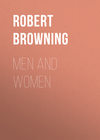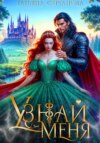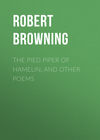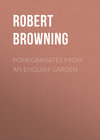Kitobni o'qish: «Men and Women»
INTRODUCTION
Thirteen years after the publication, in 1855, of the Poems, in two volumes, entitled "Men and Women," Browning reviewed his work and made an interesting reclassification of it. He separated the simpler pieces of a lyric or epic cast—such rhymed presentations of an emotional moment, for example, as "Mesmerism" and "A Woman's Last Word," or the picturesque rhymed verse telling a story of an experience, such as "Childe Roland" and "The Statue and the Bust"—from their more complex companions, which were almost altogether in blank verse, and, in general, markedly personified a typical man in his environment, a Cleon or Fra Lippo, a Rudel or a Blougram. These boldly sculptured figures he set apart from the others as the fit components of the more closely related group which ever since has constituted the division now known as "Men and Women."
Possibly the poet took some pleasure in thus bringing to confusion those critics who, beginning first to take any notice of his work after the issue of these volumes of 1855, discovered therein poems they praised chiefly by means of contrasting them with foregoing work they found unnoticeable and later work they declared inscrutable. Their bland discrimination, at any rate, in favor of "Men and Women" became henceforth inapplicable, since the poet not only cast out from the division they elected to honor the little lyrical pieces that caught their eye, but also brought to the front, from his earlier neglected work of the same kind as the monologues retained, his Johannes Agricola of 1836, Pictor Ignotus of 1845, and Rudel of 1842. Later criticism, moreover, that even yet assumes to ring the old changes of discrimination against everything but "Men and Women," is made not merely inapplicable by this re-arrangement, but uninformed, a meaningless echo of a borrowed opinion which has had the very ground from under it shifted.
The self-criticism of which this re-arrangement gives a hint is more valuable.
All the shorter poems accumulated up to this period, various as they are in theme and metrical form, are uniform in the fashioning of their contour and color. As soon as this underlying uniformity of make is recognized it may be seen to be the coloring and relief belonging to any sort of poetic material, whether ordinarily accounted dramatic material or not, which is imaginatively externalized and made concrete. This peculiarity of make Browning early acknowledged in his estimate of his shorter poems as characteristic of his touch, when he called his lyrics and romances dramatic. He became consciously sensitive later to slight variations effected by his manipulation in shape and shade which it yet takes a little thought to discern, even after his own redivision of his work has given the clew to his self-judgments.
Not only events, deeds, and characters—the usual subject-matter moulded and irradiated by dramatic power—but thoughts, impressions, experiences, impulses, no matter how spiritualized or complex or mobile, are transfused with the enlivening light of his creative energy in his shorter poems. Perhaps the very path struck out through them by the poet in his re-division may be traced between the leaves silently closing together again behind him if it be noticed that among these poems there are some with footholds firmly rooted in the earth and others whose proper realm is air. These have wings for alighting, for flitting thither and hither, or for pursuing some sudden rapt whirl of flight in Heaven's face at fancy's bidding. They are certainly not less original than those other solider, earth-fast poems, but they are less unique. Being motived in transient fancy, they are more akin to poems by other hands, and could be classed more readily with them by any observer, despite all differences, as little poetic romances or as a species of lyric.
They were probably first found praiseworthy, not only because they were simpler, but because, being more like work already understood and approved, adventurous criticism was needed to taste their quality. The other longer poems in blank verse, graver and more dignified, yet even more vivid, and far more life-encompassing, which bore the rounded impress of the living human being, instead of the shadowy motion of the lively human fancy—these are the birth of a process of imaginative brooding upon the development of man by means of individuality throughout the slow, unceasing flow of human history. Browning evidently grew aware that whatever these poems of personality might prove to be worth to the world, these were the ones deserving of a place apart, under the early title of "Men and Women," which he thought especially suited to the more roundly modelled and distinctively colored exemplars of his peculiar faculty.
In his next following collection, under the similar descriptive title of "Dramatis Personae," he added to this class of work, shaping in the mould of blank verse mainly used for "Men and Women" his personifications of the Medium Mr. Sludge, the embryo theologian Caliban, the ripened mystical saint of "A Death in the Desert"; while Abt Vogler, the creative musician, Rabbi ben Ezra, the intuitional philosopher, and the chastened adept in loving, James Lee's wife, although held within the embrace of their maker's dramatic conception of them, as persons of his stage, were made to pour out their speech in rhyme as Johannes Agricola in the earlier volume uttered his creed and Rudel his love-message, as if the heat of their emotion-moved personality required such an outlet. Some such general notion as this of the scope of this volume, and of the design of the poet in the construction, classification, and orderly arrangement of so much of his briefer work as is here contained seems to be borne out upon a closer examination. On the threshold of this new poetic world of personality stands the Poet of the poem significantly called "Transcendentalism," who is speaking to another poet about the too easily obvious, metaphor-bare philosophy of his opus in twelve books. That the admonishing poet is stationed there at the very door-sill of the Gallery of Men and Women is surely not accidental, even if Browning's habit of plotting his groups of poems symmetrically by opening with a prologue-poem sounding the right key, and rounding the theme with an epilogue, did not tend to prove it intentional. It is an open secret that the last poem in "Men and Women," for instance, is an epilogue of autobiographical interest, gathering up the foregoing strains of his lyre, for a few last chords, in so intimate a way that the actual fall of the fingers may be felt, the pausing smile seen, as the performer turns towards the one who inspired "One Word More." The appropriateness of "Transcendentalism" as a prologue need be no more of a secret than that of "One Word More" as an epilogue, although it is left to betray itself. Other poets writing on the poet, Emerson for example, and Tennyson, place the outright plain name of their thought at the head of their verses, without any attempt to make their titles dress their parts and keep as thoroughly true to their roles as the poems themselves. But a complete impersonation of his thought in name and style as well as matter is characteristic of Browning, and his personified poets playing their parts together in "Transcendentalism" combine to exhibit a little masque exemplifying their writer's view of the Poet as veritably as if he had named it specifically "The Poet." One poet shows the other, and brings him visibly forward; but even in such a morsel of dramatic workmanship as this, fifty-one lines all told, there is the complexity and involution of life itself, and, as ever in Browning's monologues, over the shoulder of the poet more obviously portrayed peers as livingly the face of the poet portraying him. And this one—the admonishing poet—is set there with his "sudden rose," as if to indicate with that symbol of poetic magic what kind of spell was sought to be exercised by their maker to conjure up in his house of song the figures that people its niches. Could a poem be imagined more cunningly devised to reveal a typical poetic personality, and a typical theory of poetic method, through its way of revealing another? What poet could have composed it but one who himself employed the dramatic method of causing the abstract to be realizable through the concrete image of it, instead of the contrary mode of seeking to divest the objective of its concrete form in order to lay bare its abstract essence? This opposite theory of the poetic function is precisely the Boehme mode, against which the veiled dramatic poet, who is speaking in favor of the Halberstadtian magic, admonishes his brother, while he himself in practical substantiation of his theory of poetics brings bodily in sight the boy-face above the winged harp, vivified and beautiful himself, although his poem is but a shapeless mist.
Not directly, then, but indirectly, as the dramatic poet ever reveals himself, does the sophisticated face of the subtle poet of "Men and Women" appear as the source of power behind both of the poets of this poem, prepossessing the reader of the verity and beauty of the theory of poetic art therein exemplified. Such an interpretation of "Transcendentalism," and such a conception of it as a key to the art of the volume it opens, chimes in harmoniously with the note sounded in the next following poem, "How it Strikes a Contemporary." Here again a typical poet is personified, not, however, by means of his own poetic way of seeing, but of the prosaic way in which he is seen by a contemporary, the whole, of course, being poetically seen and presented by the over-poet. Browning himself, and in such a manifold way that the reader is enabled to conceive as vividly of the talker and his mental atmosphere and social background—the people and habitudes of the good old town of Valladolid—as of the betalked-of Corregidor himself; while by the totality of these concrete images an impression is conveyed of the dramatic mode of poetic expression which is far more convincing than any explicit theoretic statement of it could be, because so humanly animated.
"Artemis Prologizes" seems to have been selected to close this little opening sequence of poems on the poet, because that fragment of a larger projected work could find place here almost as if it were a poet's exercise in blank verse. Its smooth and spacious rhythm, flawless and serene as the distant Greek myth of the hero and the goddess it celebrates, is in striking contrast with the rougher, but brighter and more humanly colloquial blank verse of "Bishop Blougram's Apology," for example, or the stiff carefulness of the "Epistle" of Karshish. It might alone suffice, by comparison with the metrical craftsmanship of the other poems of "Men and Women," to assure the observant reader that never was a good workman more baselessly accused of metrical carelessness than the poet who designedly varies his complicated verse-effects to suit every inner impulse belonging to his dramatic subject. A golden finish being in place in this statuesque, "Hyperion"-like monologue of Artemis, behold here it is, and none the less perfect because not merely the outcome of the desire to produce a polished piece of poetic mechanism.
Browning, perhaps, linked his next poem, "The Strange Medical Experience of Karshish, the Arab Physician," with the calm prologizing of the Hellenic goddess, by association of the "wise pharmacies" of AEsculapius, with the inquisitive sagacity of Karshish, "the not-incurious in God's handiwork." By this ordering of the poems, the reader may now enjoy, at any rate, the contrasts between three historic phases of wisdom in bodily ills: the phase presented in the dependence of the old Greek healer upon simple physical effects, soothing "with lavers the torn brow," and laying "the stripes and jagged ends of flesh even once more"; and the phases typified, on the one side, by the ingenious Arab, sire of the modern scientist, whose patient correlation of facts and studious, sceptical scrutiny of cause and effect are caught in the bud in the diagnosis transmitted by Karshish to Abib, and, on the other side, by the Nazarene physician, whose inspired secret of summoning out of the believing soul of man the power to control his body—so baffled and fascinated Karshish, drawing his attention in Lazarus to just that connection of the known physical with the unknown psychical nature which is still mystically alluring the curiosity of investigators.
From the childlike, over-idealizing mood of Lazarus toward the God who had succored him, inducing in him so fatalistic an indifference to human concerns, there is but a step to the rapture of absolute theology expressed in the person of Johannes Agricola. Such poems as these put before the cool gaze of the present century the very men of the elder day of religion. Their robes shine with an unearthly light, and their abstracted eyes are hypnotized by the effulgence of their own haloes. Yet the poet never fails to insinuate some naive foible in their personification, a numbness of the heart or an archaism of soul, which reveals the possessed one as but a human brother, after all, shaped by his environment, and embodying the spirit of an historic epoch out of which the current of modern life is still streaming.
The group of art poems which follows similarly presents a dramatic synthesis of the art of the Renaissance as represented by three types of painters. The religious devotion of the monastic painter, whose ecstatic spirit breathes in "Pictor Ignotus," probably gives this poem its place adjoining Agricola and Lazarus. His artist's hankering to create that beauty to bless the world with which his soul refrains from grossly satisfying, unites the poem with the two following ones. In the first of these the realistic artist, Fra Lippo, is graphically pictured personally ushering in the high noon of the Italian efflorescence. In the second, the gray of that day of art is silvering the self-painted portrait of the prematurely frigid and facile formalist, Andrea del Sarto. In "Pictor Ignotus" not only the personality of the often unknown and unnamed painting-brother of the monasteries is made clear, but also the nature of his beautiful cold art and the enslavement of both art and personality to ecclesiastical beliefs and ideals. In "Fra Lippo Lippi" not alone the figure of the frolicsome monk appears caught in his pleasure-loving escapade, amid that picturesque knot of alert-witted Florentine guards, ready to appreciate all the good points in his story of his life and the protection the arms of the Church and the favor of the Medici have afforded his genius, but, furthermore, is illustrated the irresistible tendency of the art-impulse to expand beyond the bounds set for it either by laws of Church or art itself, and to find beauty wheresoever in life it chooses to turn the light of its gaze. So, also, in "Andrea del Sarto," the easy cleverness of the unaspiring craftsman is not embodied apart from the abject relationship which made his very soul a bond-slave to the gross mandates of "the Cousin's whistle." Yet in all three poems the biographic and historic conditions contributing toward the individualizing of each artist are so unobtrusively epitomized and vitally blended, that, while scarcely any item of specific study of the art and artists of the Renaissance would be out of place in illustrating the essential truth of the portraiture and assisting in the better appreciation of the poem, there is no detail of the workmanship which does not fall into the background as a mere accessory to the dominant figure through whose relationship to his art his station in the past is made clear.
This sort of dramatic synthesis of a salient, historical epoch is again strikingly disclosed in the following poem of the Renaissance period, "The Bishop Orders his Tomb at Saint Praxed's Church." In this, again, the art-connoisseurship of the prelacy, so important an element in the Italian movement towards art-expression, is revealed to the life in the beauty-loving personality of the dying bishop. And by means, also, of his social ties with his nephews, called closer than they wish about him now; with her whom "men would have to be their mother once"; with old Gandolf, whom he fancies leering at him from his onion-stone tomb; and with all those strong desires of the time for the delight of being envied, for marble baths and horses and brown Greek manuscripts and mistresses, the seeds of human decay planted in the plot of Time, known as the Central Renaissance, by the same lingering fleshliness and self-destroying self-indulgence as was at home in pagan days, are livingly exposed to the historic sense.
Is the modern prelate portrayed in "Bishop Blougram's Apology," with all his bland subtlety, complex culture, and ripened perceptions, distant as the nineteenth century from the sixteenth, very different at bottom from his Renaissance brother, in respect to his native hankering for the pleasure of estimation above his fellows? Gigadibs is his Gandolf, whom he would craftily overtop. He is the one raised for the time above the commonalty by his criticism of the bishop, to whom the prelate would fain show how little he was to be despised, how far more honored and powerful he was among men. As for Gigadibs, it is to be noticed that Browning quietly makes him do more than leer enviously at his complacent competitor from a tomb-top. The "sudden healthy vehemence" that struck him and made him start to test his first plough in a new world, and read his last chapter of St. John to better purpose than towards self-glorification beyond his fellows, is a parable of the more profitable life to be found in following the famous injunction of that chapter in John's Gospel, "Feed my sheep!" than in causing those sheep to motion one, as the bishop would have his obsequious wethers of the flock motion him, to the choice places of the sward.
So, as vivid a picture of the materialism and monopolizing of the present century sowing seeds of decay and self-destruction in the movement of this age toward love of the truth, of the beauty of genuineness in character and earnestness in aim, is portrayed through the realistic personality of the great modern bishop, in his easy-smiling after-dinner talk with Gigadibs, the literary man, as is presented of the Central Renaissance period in the companion picture of the Bishop of Saint Praxed's.
In Cleon, the man of composite art and culture, the last ripe fruitage of Greek development, is personified and brought into contact, at the moment of the dawn of Christianity in Europe, with the ardent impulse the Christian ideal of spiritual life supplied to human civilization. How close the wise and broad Greek culture came to being all-sufficing, capable of effecting almost enough of impetus for the aspiring progress of the world, and yet how much it lacked a warmer element essential to be engrafted upon its lofty beauty, the reader, upon whose imaginative vision the personality of Cleon rises, can scarcely help but feel.
The aesthetic and religious or philosophical interests vitally conceived and blended, which link together so many of the main poems of "Men and Women," close with "Cleon." Rudel, the troubadour, presenting, in the self-abandonment of his offering of love to the Lady of Tripoli, an impersonation of the chivalric love characteristic of the Provencal life of the twelfth century, intervenes, appropriately, last of all, between the preceding poems and the epilogue, which devotes heart and brain of the poet himself, with the creatures of his hand, to his "Moon of Poets."
As these poetic creations now stand, they all seem, upon examination, to incarnate the full-bodied life of distinctive types of men, centred amid their relations with other men within a specific social environment, and fulfilling the possibilities for such unique, dramatic syntheses as were revealed but partially or in embryo here and there among the other shorter poems of this period of the poet's growth.
In one important particular the re-arrangement of the "Men and Women" group of poems made its title inappropriate. The graceful presence and love-lit eyes of the many women of the shorter love-poems were withdrawn, and Artemis, Andrea del Sarto's wife, the Prior's niece—"Saint Lucy, I would say," as Fra Lippo explains—and, perhaps, the inspirer of Rudel's chivalry, too, the shadowy yet learned and queenly Lady of Tripoli, alone were left to represent the "women" of the title. As for minor inexactitudes, what does it matter that the advantage gained by nicely selecting the poems properly belonging together, both in conception and artistic modelling, was won at the cost of making the reference inaccurate, in the opening lines of "One Word More," to "my fifty men and women, naming me the fifty poems finished"?—Or that the mention of Roland in line 138 is no longer in place with Karshish, Cleon, Lippo, and Andrea, now that the fantastic story of Childe Roland's desperate loyalty is given closer companionship among the varied experiences narrated in the "Dramatic Romances"? While as for the mention of the Norbert of "In a Balcony"—which was originally included as but one item along with the other contents of "Men and Women"—that miniature drama, although it stands by itself now, is still near enough at hand in the revised order to account for the allusion. These are all trifles—mere sins against literal accuracy. But the discrepancy in the title occasioned by the absence of women is of more importance. It is of especial interest, in calling attention to the fact that the creator of Pompilia, Balaustion, and the heroine of the "Inn Album"—all central figures, whence radiate the life and spiritual energy of the work they ennoble—had, at this period, created no typical figures of women in any degree corresponding to those of his men.
CHARLOTTE PORTER HELEN A. CLARKE













